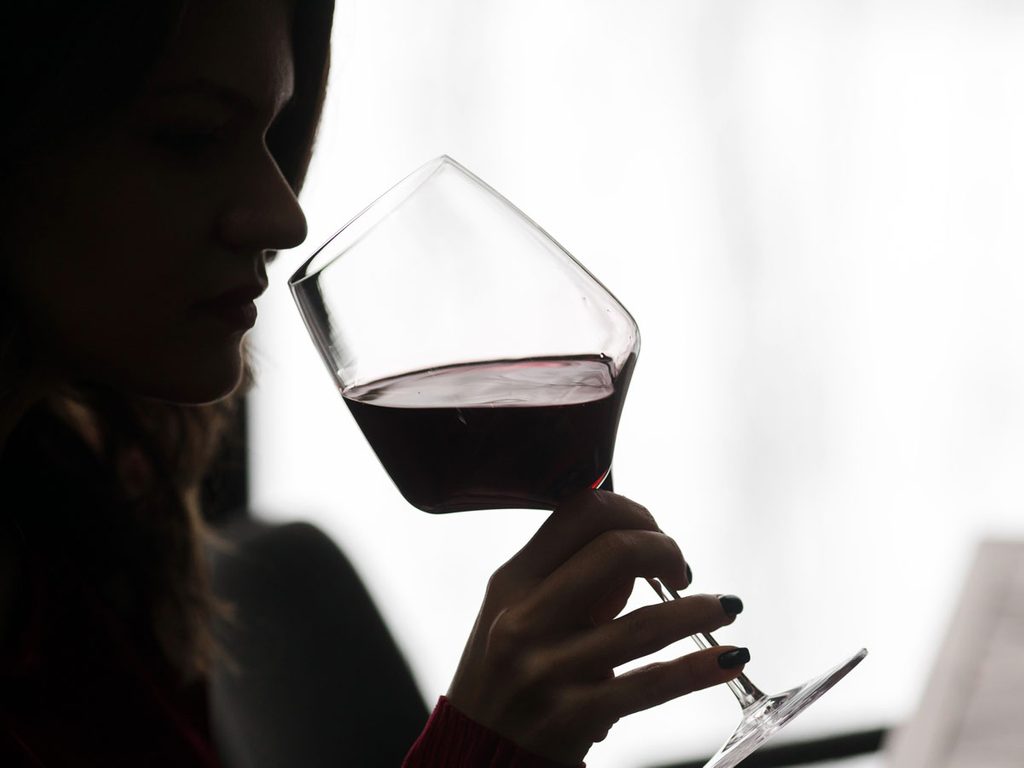This Is Why Your Face Turns Red When You Drink Alcohol

If your face turns as red as the wine in your glass, it may be due to your genetics.
Does your face always look madly sunburnt after a couple of glasses of wine? You’re not alone. However, an Internet search may make you worry about a plethora of relatively unlikely causes—such as intense allergic reactions or high blood pressure.
But the real reason you look so red after happy hour all comes down to science.
Basically, the flushed skin is your body’s way of letting you know that it’s not metabolizing alcohol as efficiently as it could be, explains Amitava Dasgupta, PhD, a professor in the department of pathology and laboratory medicine at The University of Texas Health Science Center at Houston. Alcohol is metabolized or broken down into acetaldehyde, and when your body cannot metabolize the compound during this process, the blood capillaries in your face dilate, resulting in a visibly blotchy “alcohol flush reaction.”
“If you drink two glasses of wine really fast, like more than two in one hour, your body can’t get rid of acetaldehyde fast enough, so your face may turn red,” he says.
Due to genomic differences, 80 percent of East Asians experience this reaction because they have inherited an overactive copy of a gene that metabolizes alcohol so they break down acetaldehyde extremely quickly, sometimes up to 100 times faster, he says. Because of this, they don’t experience the typical alcohol “buzz.” Instead, ALDH2 (aldehyde dehydrogenase 2) causes acetaldehyde to clear from their bloodstream at a slowed pace, instigating a significantly greater buildup of acetaldehyde and red cheeks. “This may travel with a rapid heartbeat,” he says. In addition, people who have an overactive copy of this gene may experience nausea, headaches, and overall discomfort when drinking alcohol. “They are less likely to drink alcohol because of how it makes them feel,” he says. (Psst: Check out the celebs who don’t drink alcohol.)
A 2018 study in Nature suggests that those who get a red flush while drinking alcohol may be more susceptible to damaging their DNA than those who don’t. Using a mouse model, the researchers found that the gene responsible for the flush makes it four times more likely to have DNA damage after a single dose of alcohol.
Although there is no way to change your genetic reaction to alcohol, there are tactics to minimize the rosy cheeks.
For starters, don’t try to drink more to build up a tolerance in the hope that the redness will eventually subside; unfortunately, it doesn’t work that way. Doctors avidly discourage this strategy as it may actually aggravate the condition.
Instead, limit your alcohol consumption; ideally, men should stick to no more than two standard alcoholic drinks per day and women should adhere to a maximum of one alcoholic drink per day. Binge drinking will drastically overload your body, so stay away from the beer bong at parties. “Drink slowly and in moderation to avoid the flush,” he says.
If you’re suffering with alcohol flush reaction, identify your limit and avoid exceeding it as much as possible. That may mean saying adieu to your favourite drinks, so try this delicious grape mocktail in the meantime.




